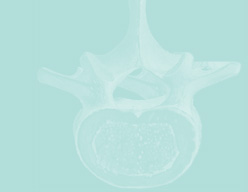page [1] [2] [3] [4] [5] [6] [7] [8]


Patients with chronic pain have a disproportionate socioeconomic impact. Chronic low back pain is the primary cause of limited activity in persons under 45 years of age and the third major cause for activity limitation in persons over the age of 45. Although acute low back pain is more common, individuals with chronic back pain account for nearly three times more work days lost, restricted activity, and disability. Nearly 2% of the total industrial workforce suffers a compensable back injury every year. It has been estimated that of 18 million Americans currently having low back pain, 8 million are partially disabled and 2.4 million are totally disabled. The annual number of lost work days due to lumbosacral back pain is 1,400 days per 1,000 workers, representing 25% of all disabling work-related injuries. Recent estimates for back pain expense due to spinal disorders have risen beyond USD 50 billion per year for the United States.
Risk Factors
Recent studies ascribe risk factors to the increased incidence of nonspecific musculoskeletal spinal disorders (table 1). Detailed analysis of musculoskeletal disorders in the workplace has led to the conclusion that there is a moderate to strong association between nonspecific spinal disorders and heavy physical load. For pain in the lumbosacral spine region, these physical parameters include exposure to activities which involve manual material handling, load moment, frequent bending and twisting, heavy physical work, and whole body vibration. For the pain in the cervical spine region, the most common risk factors are repetitive movements of the neck and arm(s), static posture and segmental vibration through hand-held tools. Work-related psychosocial factors associated with spinal disorders include rapid work pace, monotonous work, low job satisfaction, low decision latitude, and job stress. Other characteristics affecting the susceptibility to spinal disorders include age, gender, Body Mass Index, and individual psychosocial factors.
There may be a genetic factor involved in spinal disorders involving the disk. Studies show a positive family history as a risk factor for disk herniation. The exact cause of this predisposition is not known and could be a result of congenital spinal abnormalities or a small vertebral canal, which would increase sensitivity to mechanical stress on the back.
| page [1] [2] [3] [4] [5] [6] [7] [8] >> next |